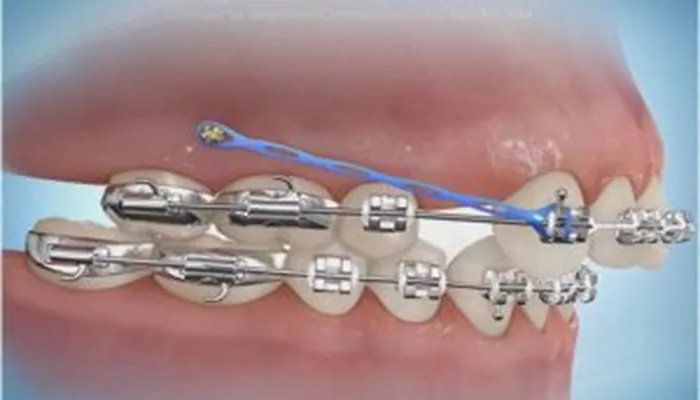Damon braces are a popular type of orthodontic treatment designed to straighten teeth and improve dental alignment.
Unlike traditional braces, Damon braces utilize a unique self-ligating system that offers several advantages, including reduced treatment time and increased comfort. In this article, we will explore what Damon braces are made of, how they work, their benefits, and other important details that patients should know.
Understanding Damon Braces
What Are Damon Braces?
Damon braces are a specific type of braces that use a self-ligating mechanism. This means that the brackets have a built-in clip that holds the archwire in place, eliminating the need for elastic or metal ties. This design allows the teeth to move more freely, resulting in a more efficient treatment process.
How Do Damon Braces Work?
Damon braces work by applying gentle pressure to the teeth through the archwire. The self-ligating brackets allow for a smoother movement of the teeth, which can lead to faster treatment times. The system reduces friction and allows the teeth to move in a more natural way.
Materials Used in Damon Braces
1. Brackets
The brackets used in Damon braces are made from two primary materials:
Stainless Steel: Most Damon braces are constructed from high-quality stainless steel. This material is strong, durable, and resistant to corrosion. Stainless steel brackets can withstand the forces applied during orthodontic treatment and are less likely to break or chip.
Ceramic: Some Damon braces are available in a ceramic option. Ceramic brackets are tooth-colored or clear, making them less noticeable than metal brackets. They are a popular choice for patients who prefer a more aesthetic option. However, ceramic brackets may be slightly less durable than stainless steel and can be more prone to staining.
2. Archwires
Archwires are the thin metal wires that connect the brackets and guide the movement of the teeth. Damon braces typically use:
Nickel-Titanium (NiTi) Wires: These wires are made from a combination of nickel and titanium. They are known for their flexibility and memory properties. NiTi wires can expand and contract, allowing for gentle, continuous pressure on the teeth. This material is particularly effective in the early stages of treatment.
Stainless Steel Wires: As treatment progresses, orthodontists may switch to stainless steel wires. These wires are stiffer than NiTi wires and provide more control over tooth movement. They are often used in the later stages of treatment to refine the alignment of the teeth.
3. Ligatures
While Damon braces do not require traditional ligatures, some patients may still choose to use colored or clear ligatures for aesthetic purposes. These ligatures are made from elastic materials and can be used to secure the archwire in place if desired.
4. Self-Ligating Mechanism
The self-ligating mechanism in Damon braces is a key feature that differentiates them from traditional braces. The brackets have a built-in sliding mechanism that holds the archwire in place without the need for elastic ties. This mechanism is typically made from:
Metal Components: The clips or gates that hold the archwire are usually made from stainless steel or a durable metal alloy. This ensures that the mechanism is strong and can withstand the forces applied during treatment.
Plastic Components: Some Damon brackets may incorporate plastic components in their design. These are typically used in the sliding mechanism to reduce friction and improve the overall efficiency of tooth movement.
Benefits of Damon Braces
1. Reduced Treatment Time
One of the main advantages of Damon braces is that they often result in shorter treatment times compared to traditional braces. The self-ligating system allows for faster tooth movement, which can reduce the overall duration of orthodontic treatment.
2. Increased Comfort
Damon braces are designed to be more comfortable than traditional braces. The self-ligating brackets reduce friction between the brackets and archwire, leading to less discomfort during adjustments. Many patients report experiencing less pain and soreness with Damon braces.
3. Fewer Office Visits
Because Damon braces can move teeth more efficiently, patients may require fewer office visits for adjustments. This can be a significant time-saver for busy individuals and families.
4. Improved Oral Hygiene
The design of Damon braces allows for easier cleaning compared to traditional braces. The absence of elastic ties means there are fewer places for food particles and plaque to accumulate. This can lead to better oral hygiene during treatment.
5. Aesthetic Options
For patients concerned about the appearance of braces, Damon offers both metal and ceramic options. Ceramic Damon braces provide a more discreet look, making them a popular choice for adults and teens.
Care and Maintenance of Damon Braces
1. Oral Hygiene
Maintaining good oral hygiene is crucial when wearing Damon braces. Patients should:
Brush their teeth at least twice a day using a soft-bristled toothbrush and fluoride toothpaste.
Floss daily to remove plaque and food particles from between the teeth and brackets.
Use an antibacterial mouthwash to help reduce plaque buildup.
2. Dietary Considerations
Certain foods can damage braces or become lodged in the brackets. Patients should avoid:
- Hard foods (e.g., nuts, hard candies)
- Sticky foods (e.g., caramel, taffy)
- Chewy foods (e.g., bagels, tough meats)
3. Regular Check-ups
Patients should attend regular orthodontic appointments to monitor progress and make any necessary adjustments. These visits are important for ensuring that the treatment is progressing as planned.
Conclusion
Damon braces are an innovative orthodontic treatment option made from high-quality materials, including stainless steel and ceramic. Their unique self-ligating system offers several benefits, such as reduced treatment time, increased comfort, and improved oral hygiene.
If you are considering orthodontic treatment, Damon braces may be an excellent option to achieve a straighter smile.
Consult with an orthodontist to discuss your specific needs and determine if Damon braces are right for you. With proper care and maintenance, Damon braces can lead to a healthy, beautiful smile that lasts a lifetime.
Related topics:

